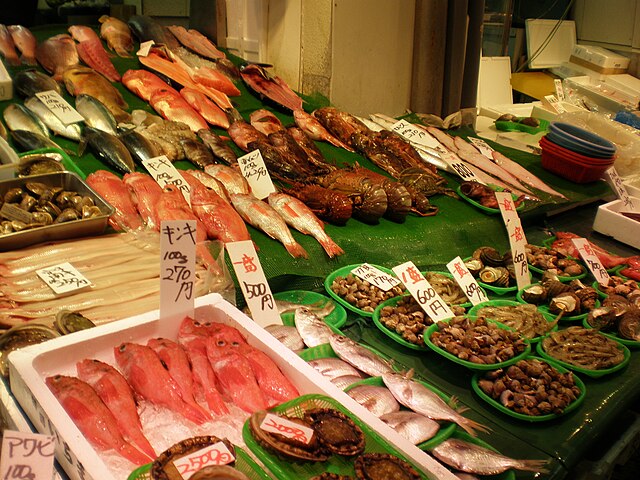
Thammasat University students who are interested in allied health sciences, sociology, business, economics, law, political science, public health, sanitation, and related subjects may find a newly available book useful.
Mobs and Microbes: Global Perspectives on Market Halls, Civic Order and Public Health is an Open Access book, available for free download at this link:
https://library.oapen.org/handle/20.500.12657/61691
The TU Library collection includes many other books about different aspects of food markets.
The publisher’s description follows:
Market halls at the intersection of civic order and public health. Markets and market halls have always been more than about trade and nourishment. A detailed look at the histories of marketplaces provides evidence of the public health concerns they faced, as well as the social commotion, mobilization and, at times, unrest they hosted. This edited volume reappraises the market hall, examining both its architectural and its social and political significance. Focusing on how these buildings embodied transformations in architecture and urbanism from the mid-nineteenth century until the age of COVID-19, Mobs and Microbes situates market halls at the intersection of civic order and public health. Central to this are advances in sanitation and hygiene. These radical interventions also mediated conflicting interests. Through their rational designs, market halls intertwined government policies and regulations, which formalized, controlled and literally imposed order. Additionally, markets served as demonstration grounds for community-led mobilization efforts. With case studies spanning North America, Europe, Asia, India and Africa, this edited volume provides a global perspective on covered market halls across many disciplines, including architecture, history of art and architecture, landscape architecture, food studies and urban history.

The book’s introduction notes:
By prioritizing the novel approach of combining civic order and public health, this book underscores the degree to which market buildings embodied transformations in architecture and urbanism from the mid-nineteenth century until the age of COVID-19. Crucial to this process are advancements in sanitation and hygiene and the inception of epidemiological and bacteriological research, all of which greatly influenced the spatial planning and physical design of markets. While regulations and inspections ordered these buildings, new scientific developments determined their location and connection to infrastructure, defined their layout, curbed pests, integrated natural light, ventilation, and mechanical systems, dictated materials, and regulated food stall design. Radical scientific interventions also mediated conflicting political and social interests. Through their rational designs, market halls intertwined with government policies and regulations that formalized, controlled, and literally imposed order on the market economy. In colonial contexts, these designs were often deployed at the expense of Indigenous and local knowledge. Furthermore, this was by no means a oneway process: while political powers sought to exert influence and project a particular image, citizens and market vendors mobilized opposition efforts to resist such pressures by displaying acts of resilience. Markets eventually also served as demonstration grounds for community-led mobilization efforts. Hence, besides architects, key protagonists involved in the development and transformation of markets have included public health officers, activists, politicians, and vendors. At the same time, markets are always greater than the sum of their parts: while some have been integral to visions of urban sanitary reform, others were pivotal nodes in the long-standing food supply network of cities; and more recently, as mentioned above, markets have increasingly become essential components to the revitalization of urban public spaces. Like the foodstuffs they contain, the market halls in this collection evince the spread of ideas, the cross-pollination of methods, and the inflection of practices. […]
This is the first book to consider the complex sociopolitical and public health roles of this kind of building type from a global perspective. Ultimately, this specific focus, in particular the relationship between marketplaces, disease, Confluence 11 and sanitation, not only renders this volume especially relevant in the present day but also opens a window for reflecting on the lessons that historic markets may continue to offer us into the future. The contributions presented here explore markets in ten cities across four continents. Although these studies follow a roughly chronological order, two contributions that directly foreground epidemics, one in the historical perspective and another in the present day, bookend the volume as a way of acknowledging the extraordinary period of time during which this project came to fruition.
A chapter by Assistant Professor Min Kyung Lee, who teaches modern architecture in the Department of the Growth and Structure of Cities at Bryn Mawr College, Pennsylvania, the United States of America, and Professor Andrea Borghini, who teaches the philosophy of food at the University of Milan, Italy, observes:
For a shopper at a supermarket or grocery store, trust is located in external factors, such as government regulations, labeling and food packaging, and the reputation of the corporation. The abundance and variety that is offered in this space is possible because the elements of trust extends beyond a relationship with the producer. The supermarket serves as a proxy. In a market, the supply chain is much shorter. Vendors of vegetables, meat, and fish, are often also the producers and can speak directly to the methods of food production. In a country where geography and identity are still tightly bound, knowing whether the produce is from the next town or from another country is a significant distinction. Trust is located in a place and a human relationship. Trust became a major issue during the COVID-19 quarantine. With the closing of many central markets, Italians were forced to shop at grocery stores. In large cities, where a plethora of small ethnic grocery stores surfaced in a recent past, this became a social opportunity of encounter among different ethnic communities sharing the same neighborhood. Shoppers could examine the food choices of their “local” stores and the enterprises of immigrant vendors took on a new civic meaning and social role. Yet for the many small towns that dot the country, the only available option was a large chain supermarket. Not accustomed to sourcing produce from these companies, many organized individual deliveries directly from farmers, who were given permits to continue to work during the lockdown. This value of trust, in all stages of food production, distribution, and consumption, based on particular relationships to specific people and terrains, was reduced in policy decisions to a mere quantitative matter of food sourcing.

(All images courtesy of Wikimedia Commons)
